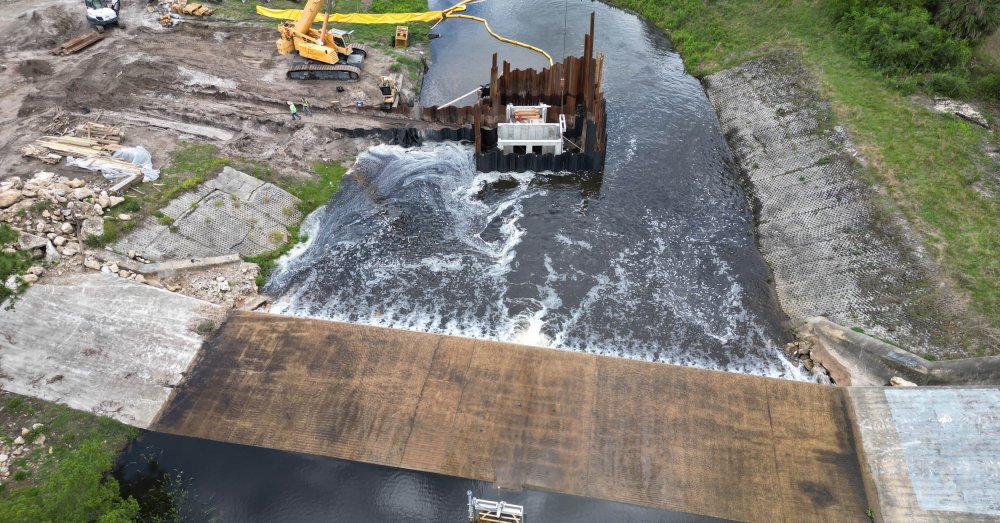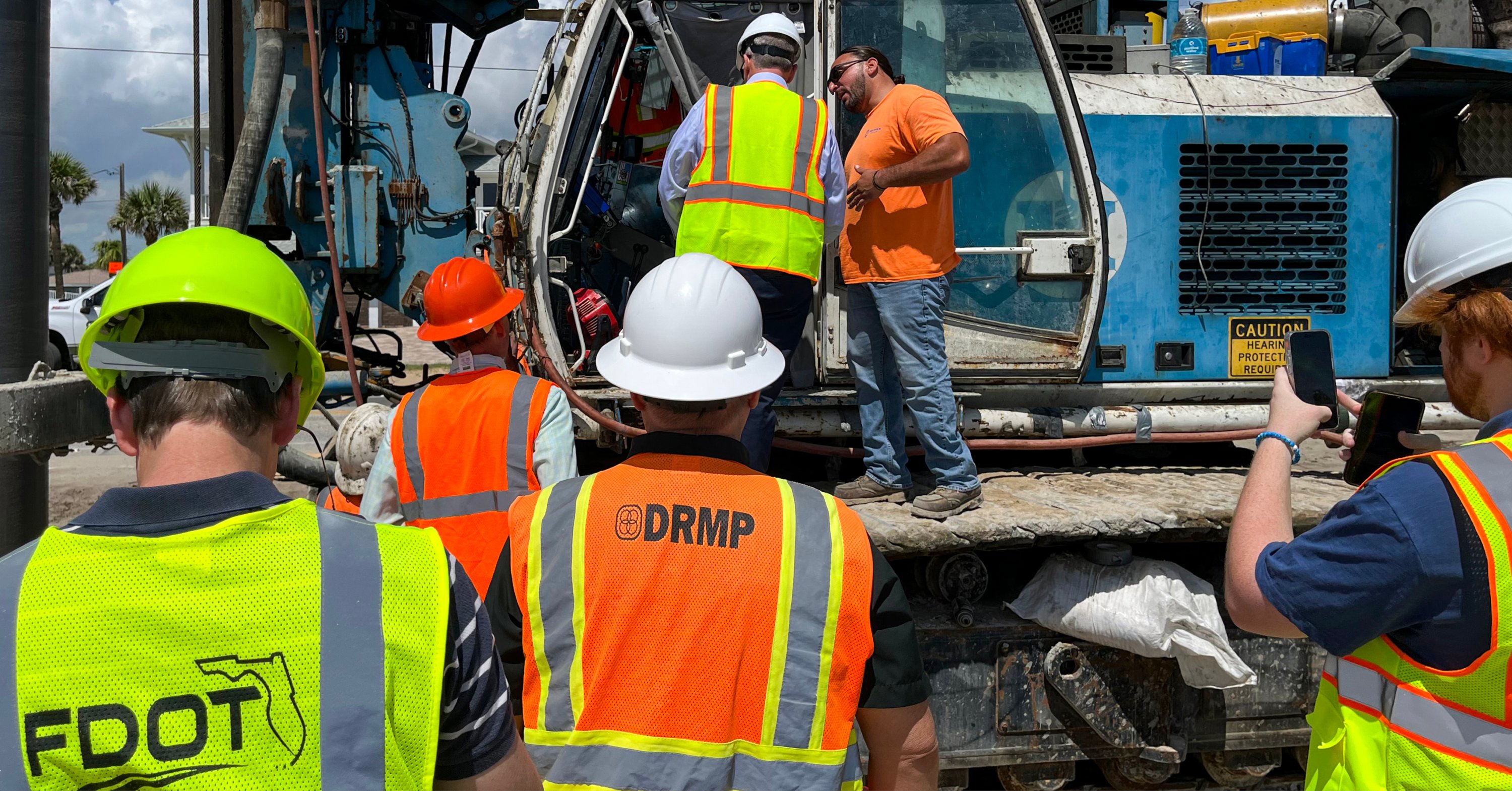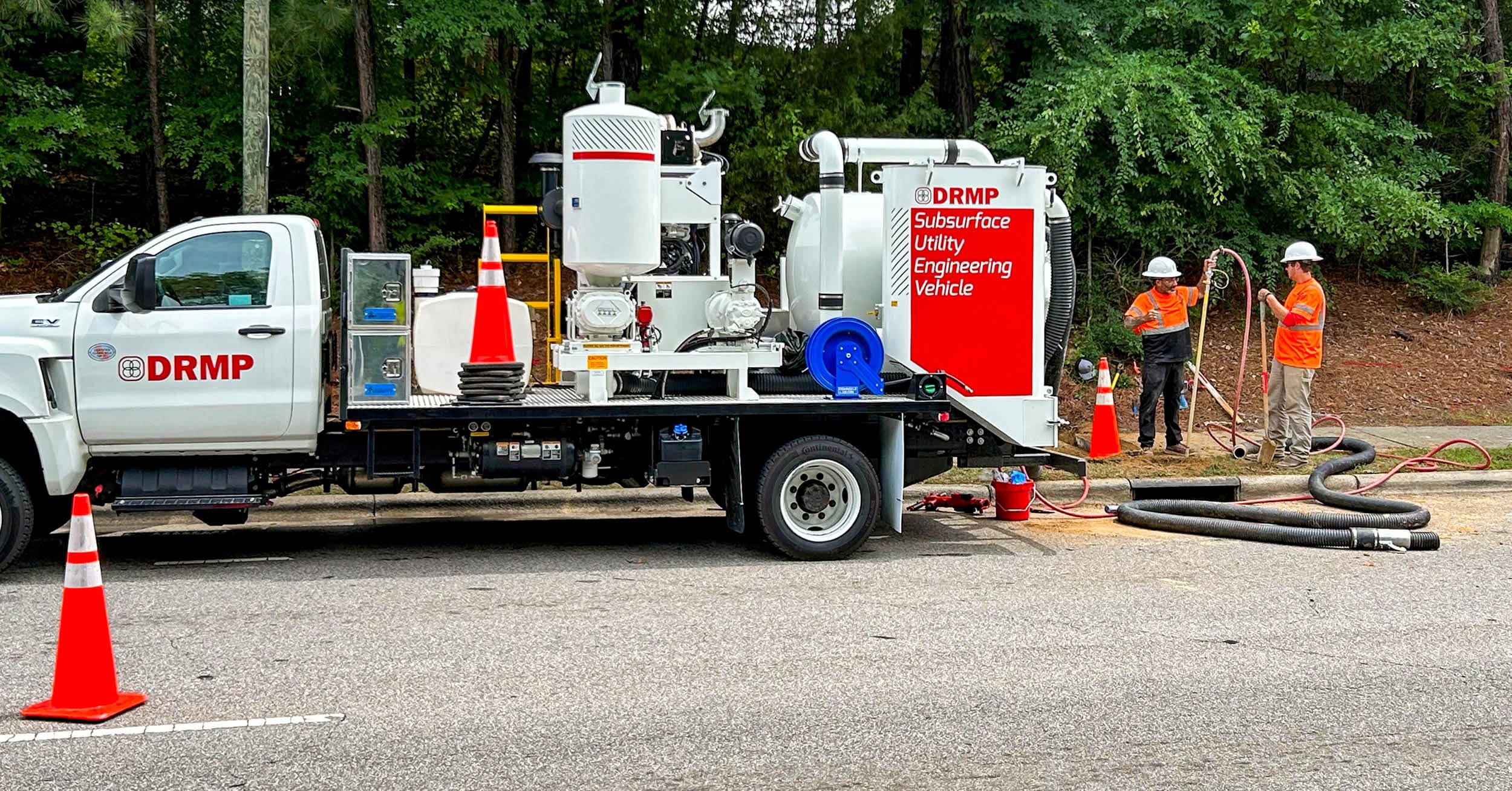DRMP was honored to have the opportunity to design a major water control structure benefiting the mid-region of Palm Coast, Fla., delivering enhanced cost-effectiveness and efficiency to ensure long-term savings for taxpayers.
The control structure, located in the Lehigh Canal a half mile west of I-95, will replace an existing failed structure and help prevent flooding. It manages the largest drainage basin in the city, encompassing 10,676 acres, and controls the highest volume of water among all city structures.
As hurricane season is underway in Florida, our design of the new L-4 surface water control structure in Palm Coast is under construction and nearing completion. The new structure will allow the city to draw down water levels quicker from its canal system ahead of a severe storm.
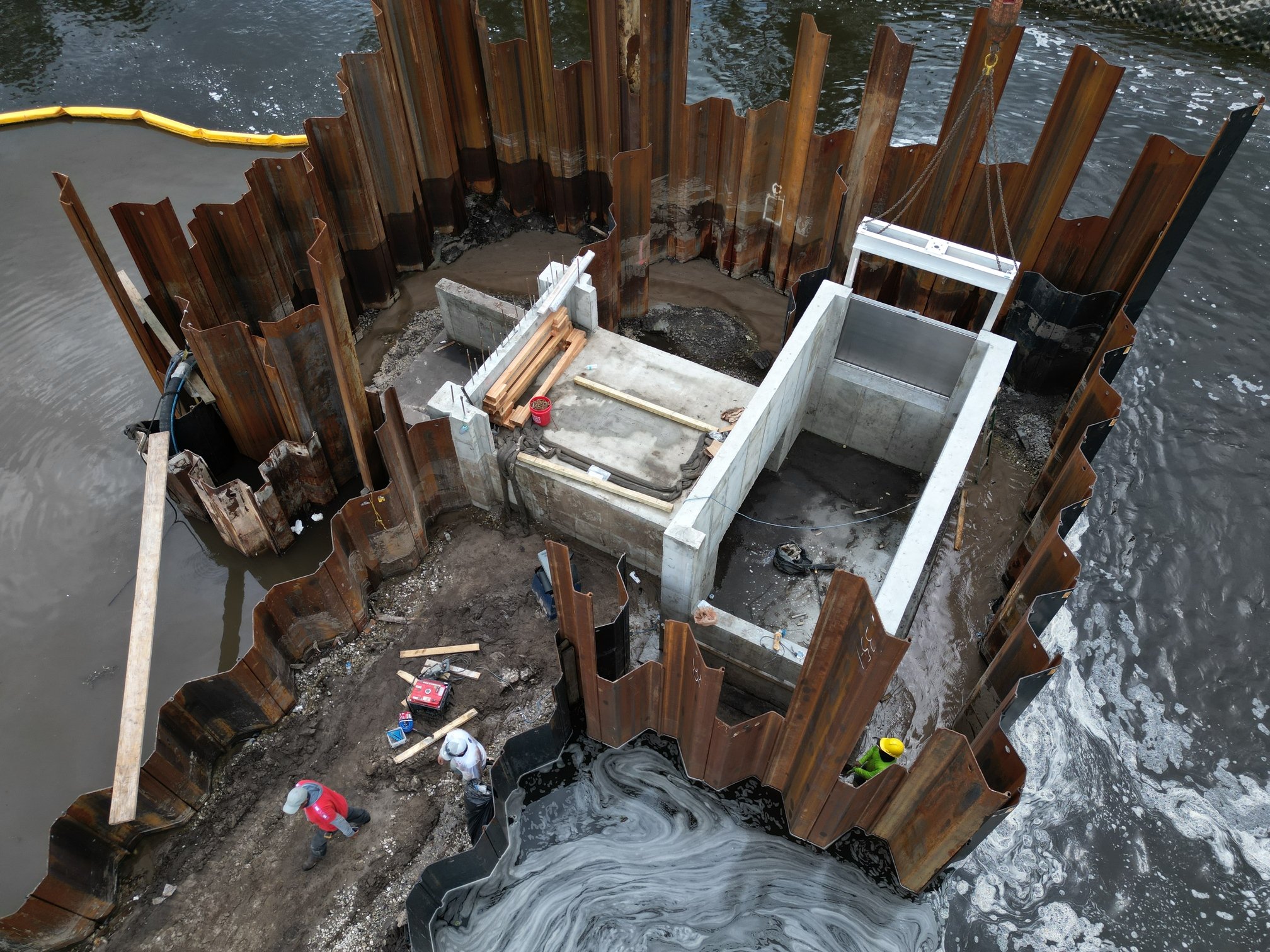
Contractors build a new weir structure designed by DRMP for the City of Palm Coast, Fla.
Our firm’s design of the new structure provides an upgraded water control system and keeps the public safer during a storm. It is more cost-effective, hydraulically efficient, and will have a longer service life than the City’s existing structure. It also will provide better access for maintenance and has a mechanical system for the weir gates, which allows the City to control it remotely.
Existing Structure Failures
The standard city water drawn down system is a single corrugated metal riser culvert with a 6-foot-long operable weir mounted to the front, such as the existing L-4 system. These structures manage water levels to create space in basins during storms, effectively preventing flooding in neighborhoods and commercial areas.
Over the years, the existing structure experienced several failures, prompting the City to replace it entirely. Later, temporary fixes were applied when issues of washout arose. On one occasion the city used 105 cubic yards of flowable fill to stabilize the washed-out structure. When the interior of the structure started to wash away, the city could not determine how seepage into the structure was occurring.
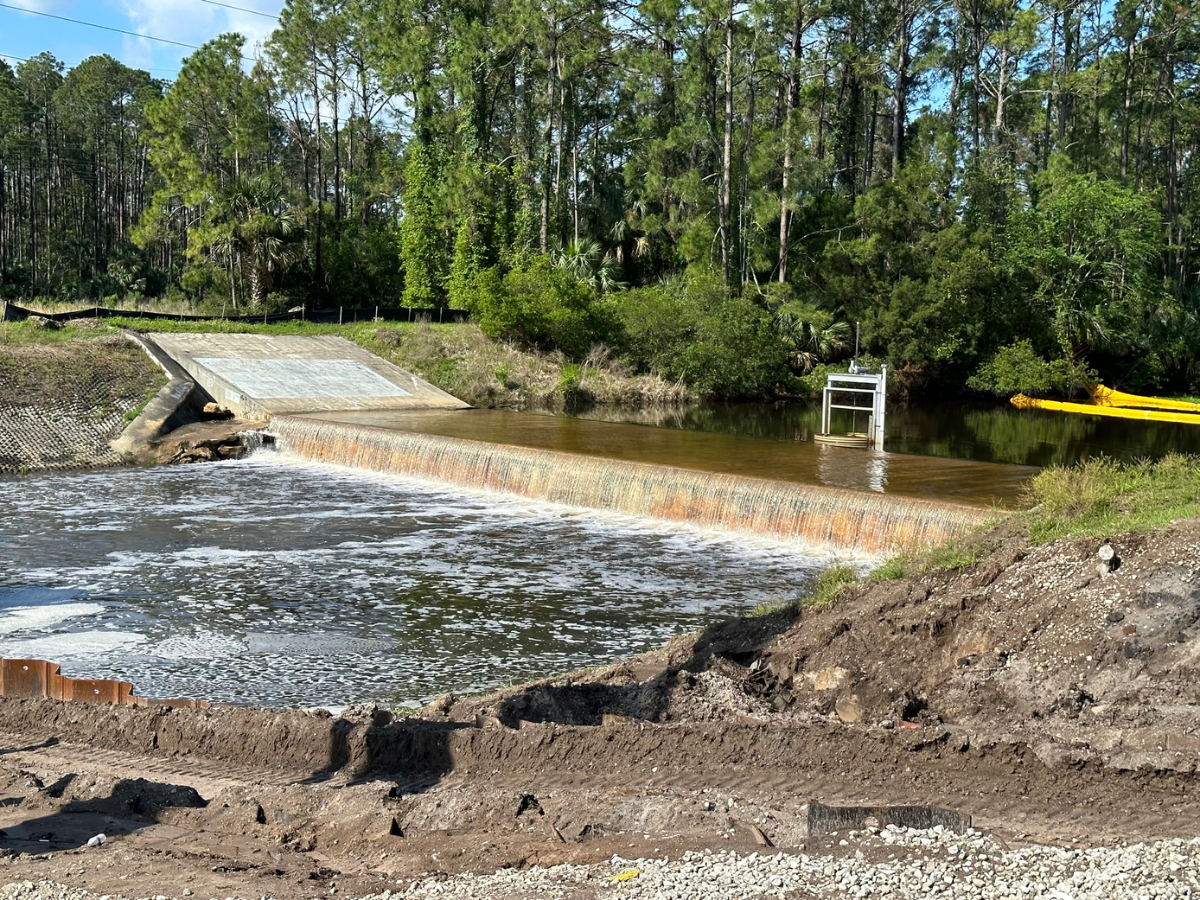
The old weir structure in the City of Palm Coast, Fla., pictured above has experienced many failures over the years.
Through drawn down analysis, DRMP determined increasing the operable weir gate setup from one 6-foot-wide gate to four 6-foot gates would achieve the city’s desired water level control of 4 feet of drawdown within 48 hours prior to a storm. The normal water level in the canal will be kept at elevation 18 (NAVD88 feet) on a regular basis and adjusted based on weather conditions.
In addition, between four separate metal risers and a single concrete riser with four gates, the City chose the concrete alternative instead of metal as this option provides improved access to the gates during high water/flow conditions and longer design service life. The existing setup features a gap between the concrete pad and metal riser, requiring field workers to reach over and across the water to perform maintenance. The new structure offers safer and more convenient access, addressing these challenges effectively.
New Design Capabilities
Our team designed the new L-4 control structure featuring a single box culvert barrel. We relocated two weir openings to the sides, narrowed the concrete overflow weir, and introduced a sloped top slab. These modifications not only reduce the structure's footprint but also minimize environmental impact. The sloped top slab effectively directs water away, keeping the concrete dry and preventing deterioration.
Additionally, we incorporated a remote-controlled gate for efficient water management, eliminating the need for on-site visits by city personnel — a feature absent in the existing structure, which lacks any mechanical capabilities.
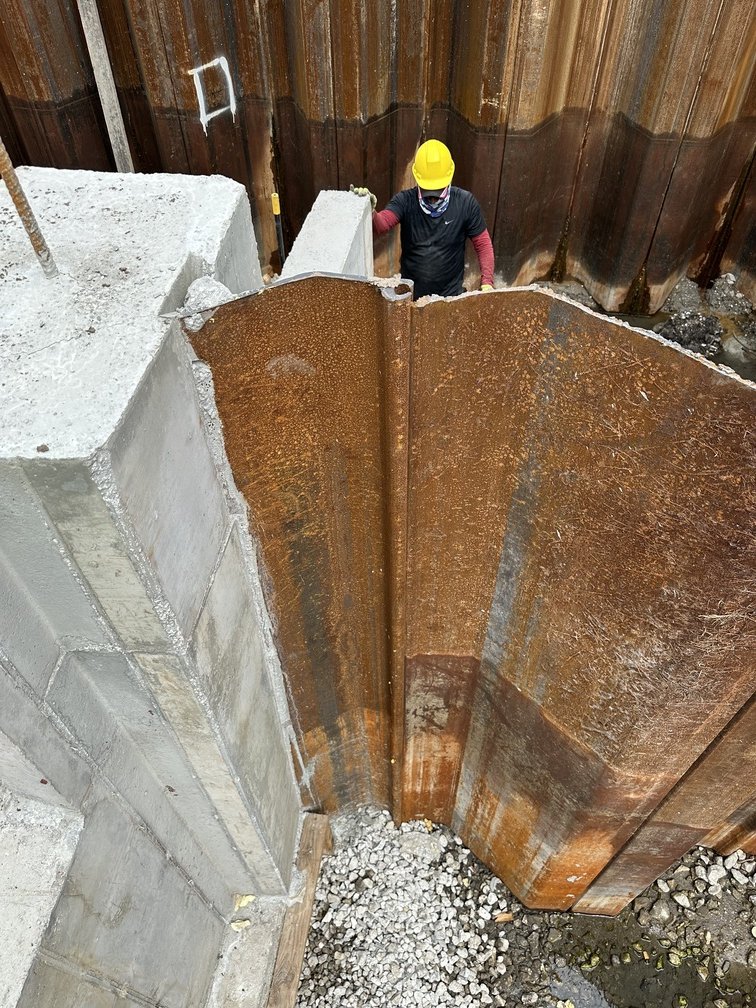
A contractor inspects sheet pile alignment during installation of a new weir structure in the City of Palm Coast, Fla.
Combining watershed-scale modeling capabilities with design of a major water control structure with remote control of automatic weir gates required a broad range of expertise from our firm. Our project team included experts in surface water modeling, structural design, geotechnical investigation, and construction, engineering, and inspection (CEI).
The project also required coordination and permitting with the St. Johns River Water Management District (SJRWMD) due to other surface waters (OSW) impacts.
Being located in a state frequently hit by hurricanes and thunderstorms, designing a more efficient and structurally sound water control structure for the City of Palm Coast makes this project even more critical and rewarding.


